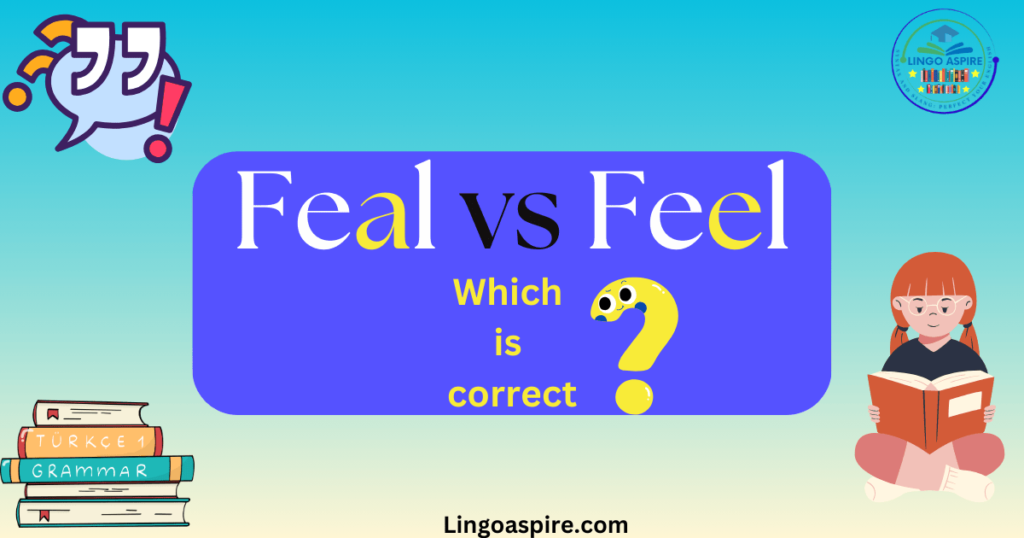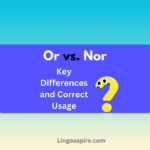When it comes to the words feal and feel, many people often get confused. Both words sound similar, but they have distinct meanings and uses. Understanding when to use feal vs feel is important for anyone who wants to improve their writing. Let’s explore these two words in depth, so you can confidently use them in the right context.
What Does the Word “Feal” Mean?
The word feal is quite rare in modern English, but it still holds an important place in historical and literary contexts. Feal is an adjective that means loyal or faithful. If you are describing someone who is devoted or steadfast, you can use feal to emphasize their allegiance to a cause, person, or idea. The Old French word “feal” and the Old English “felan” have roots that trace back to the word meaning faithful or true. This term is often used in literature, particularly in poems or historical novels, where loyalty and loyalty to a lord or a cause are central themes.
In ancient texts, the word feal frequently appears in descriptions of knights or followers who are unwavering in their allegiance. For example, a feal knight would be a knight who is loyal to their king or lord, showing steadfastness and devotion. Over time, the word has largely fallen out of everyday use but is still appreciated in poetic contexts. It is important to note that feal is also linked to concepts of allegiance and duty, which were fundamental during medieval times, when loyalty to a monarch or lord was paramount. It carries with it a sense of deep emotional connection, one that isn’t easily broken or wavered.
One way to think of feal is in the context of a loyal subject, one who remains devoted to their king or queen no matter the challenges they face. This kind of faithfulness is often celebrated in medieval literature, where loyalty was a virtue above all else. It could be applied to warriors, servants, or even a family member, showing a commitment that was unwavering and sincere.
What Does the Word “Feel” Mean?
On the other hand, feel is a much more common word in modern English. It can function as both a verb and a noun. As a verb, feel means to sense something through touch or experience an emotion. For instance, you might feel warmth on your skin, or you might feel sadness when a loved one is far away. The verb feel comes from the Old English “felan”, which means to touch or perceive. Over time, it evolved to encompass a wide range of meanings related to both physical sensations and emotional experiences.
As a noun, feel refers to the overall sense or atmosphere of something. For example, you could talk about the feel of a room, meaning the vibe or atmosphere of that space. Similarly, you might refer to the feel of an experience, such as how it made you feel emotionally. The versatility of the word feel makes it an essential part of everyday language. It’s also a word that plays a critical role in expressing emotions and sensations, whether physical or mental. Many people use feel every day to express how they are affected by the world around them.
The word “feel” can also be used to convey a sense of perception that goes beyond just the senses. It can express emotional states such as joy, sadness, or frustration. For example, you might say “I feel excited about the upcoming vacation,” or “She feels a strong sense of connection to her family.” It’s also used in more abstract senses, such as the feel of a situation, where the word captures an overall atmosphere or vibe—whether that vibe is calm, tense, or uplifting.
Feal vs Feel: Key Differences
The primary difference between feal and feel lies in their meanings and usage. Feal is specifically an adjective and is used to describe qualities of loyalty and faithfulness. In contrast, feel serves as a verb to describe the act of sensing or experiencing something, and it can also be a noun to represent emotion or atmosphere. These differences are important because feal is almost exclusively used in more poetic or archaic contexts, while feel is in everyday use for both physical and emotional sensations.
In terms of their origins, both words come from the Old French “feal” and Old English “felan”, but their paths diverged over time. Feal has mostly faded from modern usage, especially in its adjective form, while feel has become an integral part of the language, applicable in both everyday communication and literary works.
To understand the difference better, consider that feal is almost always tied to loyalty and emotional attachment, whereas feel encompasses a wide range of emotional and physical experiences. Feal would be appropriate when discussing someone who remains steadfast, no matter what challenges they face, while feel would be used in a situation where you describe a sensation or an emotion that can be experienced in the moment, such as feeling cold or feeling excited.
| Aspect | Feal | Feel |
|---|---|---|
| Part of Speech | Adjective (rare) | Verb, Noun |
| Meaning | Loyal, faithful, steadfast | Sense, perceive, experience, emotion |
| Use in Modern Language | Rarely used, found in poetic contexts | Commonly used in everyday language |
| Synonyms | Loyal, devoted, steadfast | Perceive, sense, experience, emotion |
| Origin | Old French “feal”, Old English “felan” | Old English “felan”, Proto-Germanic “*foljanan” |
When to Use “Feal”
Since feal is rarely used today, it’s important to understand when it’s appropriate to use it. You would use feal when you want to describe someone or something as loyal or devoted. The word is mostly found in historical, literary, or poetic contexts. If you are writing a historical novel or poem, you might describe a character as a feal servant or a feal warrior, to convey their steadfastness and allegiance.
The term can also be used in old-world writing, such as Middle English texts, where the idea of loyalty to a lord or monarch is a central theme. Feal expresses a deeper sense of commitment and faithfulness that extends beyond just being reliable; it implies a devotion or allegiance that is unwavering.
It’s important to remember that feal is not used much in modern-day conversation or writing. The use of this word can give your writing an old-fashioned or historical feel, making it a great choice for period pieces or works that aim to convey a sense of historical context.
| Context | Example Usage |
|---|---|
| Poetic Context | “The knight was feal to his lord.” |
| Historical Usage | “He remained feal throughout the battle.” |
| Loyalty in Literature | “The feal servant followed his king to the end.” |
When to Use “Feel”
On the other hand, feel is much more versatile and can be used in a wide variety of contexts. When you use feel as a verb, it generally refers to the action of perceiving something physically or emotionally. For example, you might say, “I feel the heat of the sun on my face,” or “I feel sad because I miss my family.” As a noun, feel can refer to the general sensation or vibe of something, such as the feel of a cozy room or the feel of a particular situation.
Because feel is a part of everyday speech, it is the word to use when describing emotional perception or physical sensations. It’s also widely used in literature, from poetry to fiction, to convey the emotional experience of characters.
As a verb, feel expresses how we experience things through our senses. Whether it’s the warmth of the sun, the cool breeze, or the emotion of happiness, the verb feel helps convey a wide range of sensory experiences. As a noun, feel captures the overall sense or atmosphere of a situation, such as the feel of excitement in the air before a concert.
| Context | Example Usage |
|---|---|
| As a Verb (Physical Sensation) | “I feel the warmth of the sun.” |
| As a Verb (Emotion) | “I feel happy when I am with my friends.” |
| As a Noun (Atmosphere) | “The feel of the room is calm and peaceful.” |
| As a Noun (Emotion) | “He had a feel of excitement about the trip.” |
Examples of “Feal” and “Feel” in Context
Understanding how feal and feel are used in context can help clarify their meanings. For example, in a historical novel, you might come across the phrase: “He was a feal knight, never wavering in his loyalty to his king.” This shows how feal is used to describe a person who is steadfast and loyal.
In contrast, in everyday speech or writing, you would more likely say, “I feel happy today because the sun is shining,” or “The feel of this room is warm and welcoming.” These examples show how feel is used to describe both physical and emotional sensations.
| Word | Example Usage |
|---|---|
| Feal | “He remained feal to his cause.” |
| Feel | “I feel a sense of joy.” |
| Feal | “The knight was a feal servant.” |
| Feel | “She feels the soft texture of the fabric.” |
Differences
Here’s a quick summary of the key differences between feal and feel:
| Aspect | Feal | Feel |
|---|---|---|
| Part of Speech | Adjective (rare) | Verb, Noun |
| Meaning | Loyal, faithful, steadfast | Sense, perceive, experience, emotion |
| Use in Modern Language | Rarely used, found in poetic contexts | Commonly used in everyday language |
| Synonyms | Loyal, devoted, steadfast | Perceive, sense, experience, emotion |
| Origin | Old French “feal”, Old English “felan” | Old English “felan”, Proto-Germanic “*foljanan” |
Conclusion
To sum up, the distinction between feal and feel comes down to context, usage, and meaning. Feal is a historical and poetic adjective that refers to loyalty and faithfulness, while feel is a much more commonly used verb and noun describing physical sensations or emotional states. While feel is a vital part of modern language, feal is reserved for literary contexts, where loyalty and steadfastness are central themes.
Understanding these differences will help you choose the right word for the right context, whether you’re writing a historical novel, a poem, or just trying to describe how you feel today.
Sources
- Grammar Palette: This article explores the meanings, origins, and usage of “feal” and “feel,” highlighting their distinct roles in the English language.
- Pro English Tips: This resource delves into the etymology and historical context of “feal,” offering insights into its evolution and usage.
- Vocab Bliss: This article provides a comprehensive comparison between “feal” and “feel,” discussing their definitions, origins, and appropriate contexts for use.







